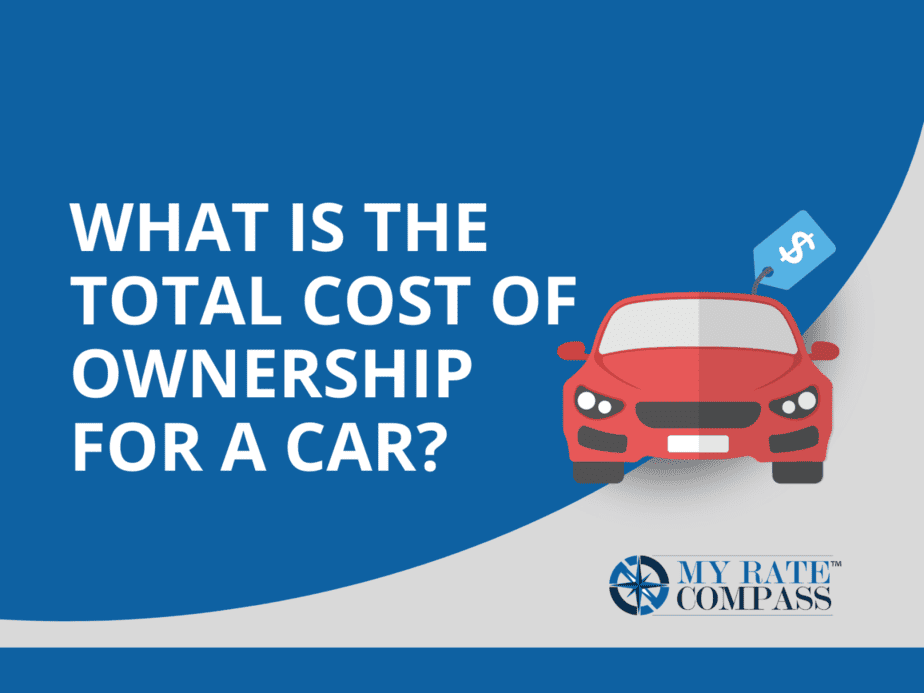Life insurance serves as a financial safety net, providing a lump sum payment to beneficiaries upon the policyholder’s death. It can help cover funeral costs, pay off debts, and replace lost income, ensuring your family’s financial well-being when you’re gone.
Life insurance in Canada works pretty much just like life insurance elsewhere in the world, with a few minor legal differences and different policy providers. This article unpacks how life insurance works, the different types of life insurance, and how life insurance in Canada may differ from life insurance elsewhere.
Quick Article Guide:
Whether you’re just starting to explore life insurance or considering updating your policy, this article will equip you with the knowledge you need to navigate the Canadian life insurance landscape with confidence.
What Are The Types Of Life Insurance Policies In Canada?
Life insurance policies in Canada typically come in term life insurance or permanent life insurance. Each of these types of life insurance has different sub-categories. These are outlined below.
How Does Permanent Life Insurance Work?
| Summary Table of Life Insurance Policies | ||||
|---|---|---|---|---|
| Type of insurance | Description | Average premium cost for age 30 (male) | Average premium cost for age 60 (male) | Extra Benefits |
| Term life insurance | Life insurance that covers a set term of 10-30+ years. After which you need to renew your insurance and your policy lapses. | $22/month for a 10-year term. | $201/month for a 10-year term. | Cheaper than life insurance and the premium tends to stay the same. |
| Whole life insurance (permanent) | Life insurance that covers a whole lifetime and builds up a cash value. | $65/month for $100k Coverage | $245/month for $100k Coverage | Builds up a cash value that can be used as a loan collateral. |
| Universal life insurance (permanent) | Life insurance that covers a whole lifetime, and allows the policyholder to invest their cash value. | $121 a month for $250,000 coverage. | $286 a month for $250,000 coverage. | Allows you to invest your cash value for more earnings. |
| Term-to-100 insurance | Allows you to pay term insurance premiums up until age 100, after which you no longer need to pay premiums. | Varies based on situation. | Varies based on situation. | Cheaper and longer coverage, but no cash value. |
Term life insurance
Term life insurance covers a specific number of years, usually 10-30 years. It provides a death benefit if the policyholder passes away within the term. This type of policy is typically more affordable than permanent life insurance, making it a popular choice for those who want temporary coverage.
Another benefit of term life insurance is that premiums typically remain the same as when you first signed up, whereas permanent life insurance has premiums that go up over time.
Permanent life insurance
Permanent life insurance refers to life insurance that covers a policyholder for their entire life up until their death. There are several forms of permanent life insurance. The most common types include:
1. Whole Life Insurance: Whole life insurance provides coverage for your entire lifetime. It offers both a death benefit and a cash value component that accumulates over time. Whole life insurance premiums are generally higher, but the policy can provide financial security and potential investment opportunities.
2. Universal Life Insurance: Universal life insurance includes an investment component. The policyholder can adjust the coverage and invest the cash value portion, potentially earning tax-deferred growth.
You may have heard of variable life insurance, a type of insurance with a less stable investment component. Because of its uncertainty, variable life insurance is not offered in Canada.
Bridging The Gap – Term-To-100 Life Insurance
In Canada, you may find something called term-to-100 insurance. This allows you to pay fixed premiums up until the age of 100, after which you no longer need to pay the premiums but your beneficiaries still get the insurance payout after your death.
Since this is not a permanent life insurance policy, there is no cash value component, but it is much more affordable than a typical permanent life insurance policy, and therefore a popular option with Canadians.
Benefits Of Life Insurance for Canadians
Life insurance offers several benefits for Canadians, providing financial security and peace of mind for individuals and their families. The main benefits are listed below:
● Financial Protection: Life insurance ensures your loved ones are financially protected in the event of your passing. The death benefit can help cover funeral expenses, pay off debts, maintain their standard of living, and secure their future.
● Income Replacement: If you’re the primary breadwinner, life insurance can replace lost income, ensuring your family can continue meeting their financial needs.
● Estate Planning: Life insurance can help streamline the process of allocating or liquidating your assets after death. It can cover estate taxes, provide liquidity for beneficiaries, and equalize inheritance among family members.
● Business Continuity: In cases where a business partner has life insurance, it can protect the business and provide funds for succession planning in the case of the business partner’s death.
Whatever your reasons, it’s clear there are many benefits to taking out a life insurance policy.
How Do Life Insurance Premiums, Coverage and Benefits Work in Canada?
In Canada, premiums, coverage and benefits for life insurance may differ from elsewhere in the world. Below we outline what you can expect for each of these features.
1. Premiums: Life insurance premiums are the recurring payments you make to keep your policy active. They can be paid monthly, annually, or sometimes as a lump sum. These premiums vary based on the following:
● Age: The older you get when you start your life insurance, the higher your payments will be. In Canada the average monthly cost of permanent life insurance if you are 30 is $18/month to $52/month (depending on coverage). On the other hand, the average monthly rate for a 60-year-old would range from $224 to $787 a month.
● Health: Having a family (or personal) history of chronic illness, heart attack, diabetes or stroke can result in higher premium rates.
● Occupation: If you work in a risky occupation, your life insurance premiums will cost more.
● Lifestyle choices: This includes choices that can affect your health, therefore shortening your lifespan, such as smoking.
● Coverage type. Term life insurance is cheaper than permanent life insurance, and may be as low as $10 a month if you are still young and healthy.
2. Coverage: The coverage amount is the sum of money your beneficiaries will receive upon your death. Your premiums will likely cost more if your coverage amount is more. In Canada, much like elsewhere, you need to consider your family’s financial needs and outstanding debts such as mortgage payments when choosing your final coverage amount.
Aim for the most comprehensive coverage for a reasonable rate. Remember to shop around, and find ways to lower your final premium amount, such as going for health checks or quitting bad lifestyle habits.
3. Benefits: Life insurance offers various benefits to policyholders and their beneficiaries. The primary benefit is the death benefit, which provides a tax-free lump sum payment to your beneficiaries upon your passing. Many permanent policies also offer riders, which are additional benefits to account for specific circumstances, such as accidental death or long-term illness.
How To Apply for Life Insurance in Canada
Applying for life insurance in Canada requires several steps, including risk assessment and a premium comparison. Understanding the application process can help you prepare in advance and help you get the best deal. With this in mind, let’s dive in:
- Research and consult: Begin the process by researching life insurance providers and policies to find one that suits your needs. You can also check with professionals such as insurance agents or brokers. If you’re looking for a place to start, check out our online guide.
- Fill in the Application Form: You will need to fill out an application form. Remember to be honest, as lying on the form can result in higher premiums and claim rejections later on. This form will include details like:
2.1 Personal information.
2.2 Health history.
2.3 Lifestyle details.
2.4 Financial Information
- Medical Examination: Depending on the coverage amount and policy type, you may be required to undergo a medical examination. The examination may include blood tests, urine analysis, and other health assessments. This step helps insurers evaluate your health and determine your risk level.
- Underwriting Process: After receiving your application and medical information, the insurance company’s underwriting team will review your details. The underwriting process can take several weeks, depending on the complexity of your application.
- Policy Issuance: Once the underwriting process is complete, and your application is approved, the insurance company will issue your policy. You’ll receive the policy documents, which outline the terms, coverage, and premiums.
Understanding the application process will help you prepare and provide the necessary information when applying for life insurance in Canada. It’s important to be thorough and transparent throughout the process to ensure a smooth application and approval.
Myths About Life Insurance
Life insurance can be a complex topic, and several common misconceptions can mislead individuals when considering this type of coverage. Let’s debunk some of these myths and clarify the realities of life insurance in Canada.
● Myth: Life Insurance is Only for the Elderly. Life insurance is not limited to older individuals. In fact, securing life insurance at a younger age can offer lower premiums and long-term financial security.
● Myth: I Have Life Insurance Coverage Through My Employer, So I Don’t Need My Own Policy. While employer-provided life insurance is a valuable benefit, it may not offer sufficient coverage to meet your family’s needs. Additionally, employer-provided coverage is typically tied to your employment and may end when you leave the company.
● Myth: Life Insurance is Expensive and Not Worth the Cost. Your life insurance premiums will vary, and you may find very affordable options. With careful consideration of your coverage needs and budget, you can find affordable life insurance options that provide valuable financial protection.
● Myth: I Can’t Get Life Insurance if I Have Pre-Existing Health Conditions. While pre-existing health conditions can affect your premiums, it doesn’t mean you can’t get life insurance. Many insurers offer coverage options for individuals with various health conditions.
The Tax Implications of Life Insurance Policies in Canada
You may be saying to yourself “Putting away all this money for my family is great, but what about taxes?”. Several things may influence how much tax you end up paying for your life insurance, including your monthly premium payments and the final death benefit payout. These are outlined below:
● Death Benefit: The death benefit received by your beneficiaries is generally tax-free. This lump sum payment is not considered taxable income and can be used to cover various expenses, including funeral costs, debt repayment, and income replacement.
● Cash Value Growth: For policies with a cash value component, any investment growth within the policy is tax-deferred. This means you won’t pay taxes on the accumulated cash value until you withdraw or surrender the policy. However, if you withdraw or surrender the policy, any gains may be subject to taxation.
● Premium Payments: Your life insurance premiums are generally not tax-deductible. However, if you use it for business purposes or estate planning some exceptions may apply.
In summary, your beneficiaries will not need to pay taxes on the death benefit payout, but if your premium includes a cash value component, this will be subject to tax.
How To Choose the Best Life Insurance Coverage In Canada
There are several life insurance providers in Canada, such as Sun Life, Manulife, and iA Financial Group. In your search for the perfect coverage, you will need to compare several insurance rates and quotes. Remember to keep these tips in mind as you search:
● Reputation: Look for companies with a strong financial rating, excellent customer service, and a history of prompt claims settlement. You can check online reviews and other trusted sources to find out about the institution’s reputation.
● Coverage options: Consider whether the policies and coverage offered by the life insurance align with your financial goals and will provide the best protection for your loved ones.
● Premium Rates: Premium rates may differ between providers. Remember that while it’s good to find affordable premiums, make sure they provide sufficient cover. Find several quotes to make this decision easier.
● Customer Service and Support: Look for companies that provide responsive customer service, easy claims processes, and access to knowledgeable insurance professionals who can guide you through the policy selection and application process.
● Additional Benefits and Riders: Consider any additional benefits or riders offered by the insurance providers. These may include options for critical illness coverage, disability protection, or the ability to customize your policy to meet specific needs.
By comparing different life insurance providers, you can find the one that offers the right combination of coverage, affordability, and customer service to meet your needs and provide peace of mind.
Final Thoughts
Life insurance plays a vital role in protecting your loved ones’ financial future and ensuring peace of mind. In Canada, life insurance is similar to life insurance in other countries. However, always remember to do your research and consult with an expert to ensure you make a decision that provides the protection your family needs.




